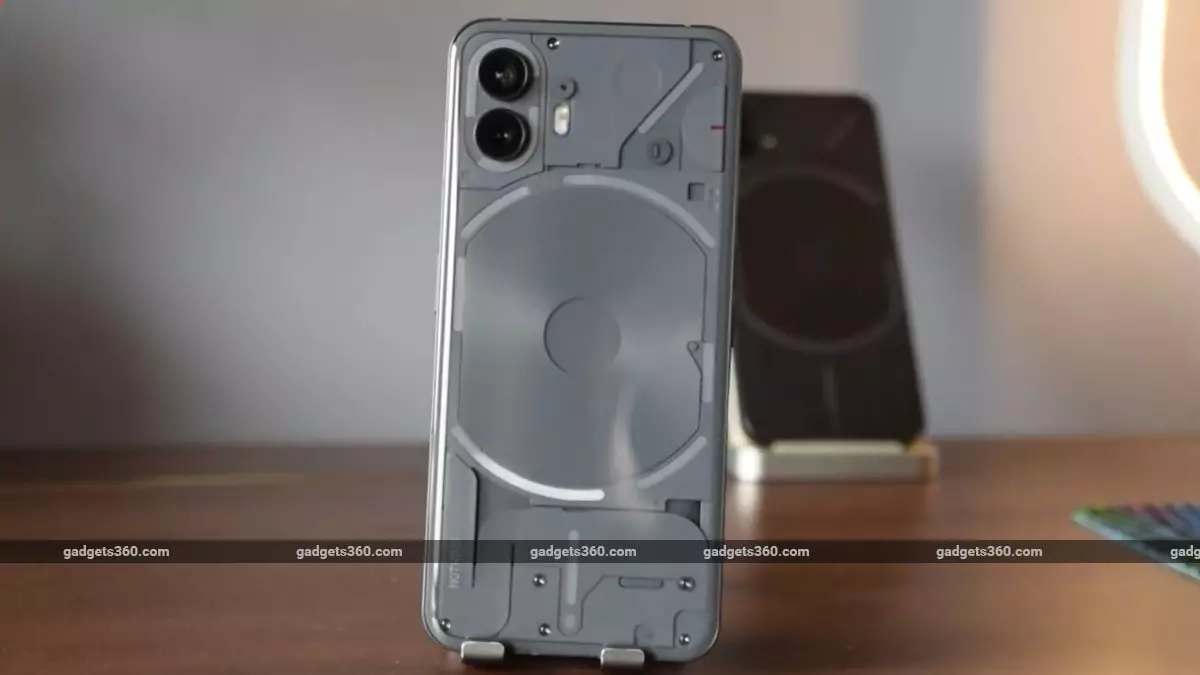The tech world has been buzzing with anticipation for the Nothing Phone 3, slated to launch globally and in India on July 1. Positioned by its UK-based maker as the “first true flagship smartphone” from the company, it arrived with high expectations. However, the excitement has been quickly tempered by a significant price increase that feels hard to justify, especially in a fiercely competitive mid-to-high-end smartphone market. The rumored price—approximately £800 or around Rs. 90,000—is almost double that of the already well-regarded Nothing Phone 2. This steep hike raises serious questions about the company’s strategy and the real value on offer.
Specs That Try to Impress—but Are They Enough?
From a technical perspective, the Phone 3 does bring some noticeable upgrades. A 6.7-inch LTPO OLED screen promises a sharp 1.5K resolution combined with a smooth 120Hz refresh rate, characteristics that flagships today are expected to deliver. The camera department seems robust, boasting a triple-camera array dominated by a 50MP periscope telephoto lens with 3x zoom, a 50MP primary sensor, and a 50MP ultra-wide lens. Powering the device will be the advanced Snapdragon 8s Gen 4 chipset, which reportedly offers substantial boosts in CPU, GPU, and NPU performance compared to its predecessor.
On paper, these improvements indicate the Nothing Phone 3 is no mere facelift but a substantial hardware refresh. Yet, when placed against the price escalation, these changes begin to look less like breakthroughs and more like industry-standard progress.
Design Innovations That Miss the Mark
One notable shift is the replacement of the signature Glyph Interface—a unique and charming LED pattern feature at the back of previous models—with the so-called Glyph Matrix. While the specifics remain elusive, early impressions suggest this new design tweak might alienate Nothing’s loyal fanbase who appreciated the quirky yet functional aesthetic touches. It is a risk to abandon such an identity-defining feature, and whether this new design will resonate or appear gimmicky remains uncertain.
The company’s emphasis on evolving the back-light system reveals an understandable desire to maintain differentiation, but it remains to be seen if this change adds meaningful utility or simply serves as a visual gimmick.
Longevity and Software Support: A Rare Positive
Amid the concerns, the software update policy is a standout feature. The promise of five years of Android upgrades and seven years of security patches is significant in an industry where many manufacturers abandon support well before three years. This commitment aligns reasonably with the growing consumer demand for longer device lifespans, and it positions Nothing Phone 3 as a more sustainable choice relative to many flagship rivals.
However, software support cannot fully compensate for strategic missteps in pricing or design. The long-term value might appeal to tech enthusiasts who prioritize durability, but everyday customers might balk at the initial sticker shock.
A Battery Package That’s Competitive—but Not Revolutionary
The leaks surrounding battery capacity and charging speeds also paint a mixed picture. A 5,150mAh battery with 100W wired fast charging and potential wireless, even reverse wireless charging puts the Nothing Phone 3 in line with current standards. While this ensures the phone will not disappoint in daily endurance, it fails to push boundaries. For a phone demanding a premium price, consumers might expect a more transformative innovation in battery technology or charging convenience.
The Broader Implications of Nothing’s Aggressive Pricing
Ultimately, the Nothing Phone 3 exemplifies a growing tension in the smartphone industry between incremental technological progress and aggressive price inflation. The device offers respectable enhancements but nothing earth-shattering to justify nearly doubling the previous model’s price. As a brand with a deliberately minimalist philosophy and an emphasis on design, the risk is that Nothing alienates its core audience by mimicking premium rivals without delivering equivalent value or brand prestige.
Consumers in 2024 are savvier; they demand meaningful innovation and fair pricing, not just upgraded specs repackaged in a new shell. Nothing’s gamble will reveal itself in the coming months: Can a relatively young brand convince users to pay a premium largely based on promises of extended software support and moderate hardware improvements? Or will this price spike backfire, leaving the Phone 3 in the unfortunate position of a flagship that fails to ignite lasting passion or loyalty?


Leave a Reply